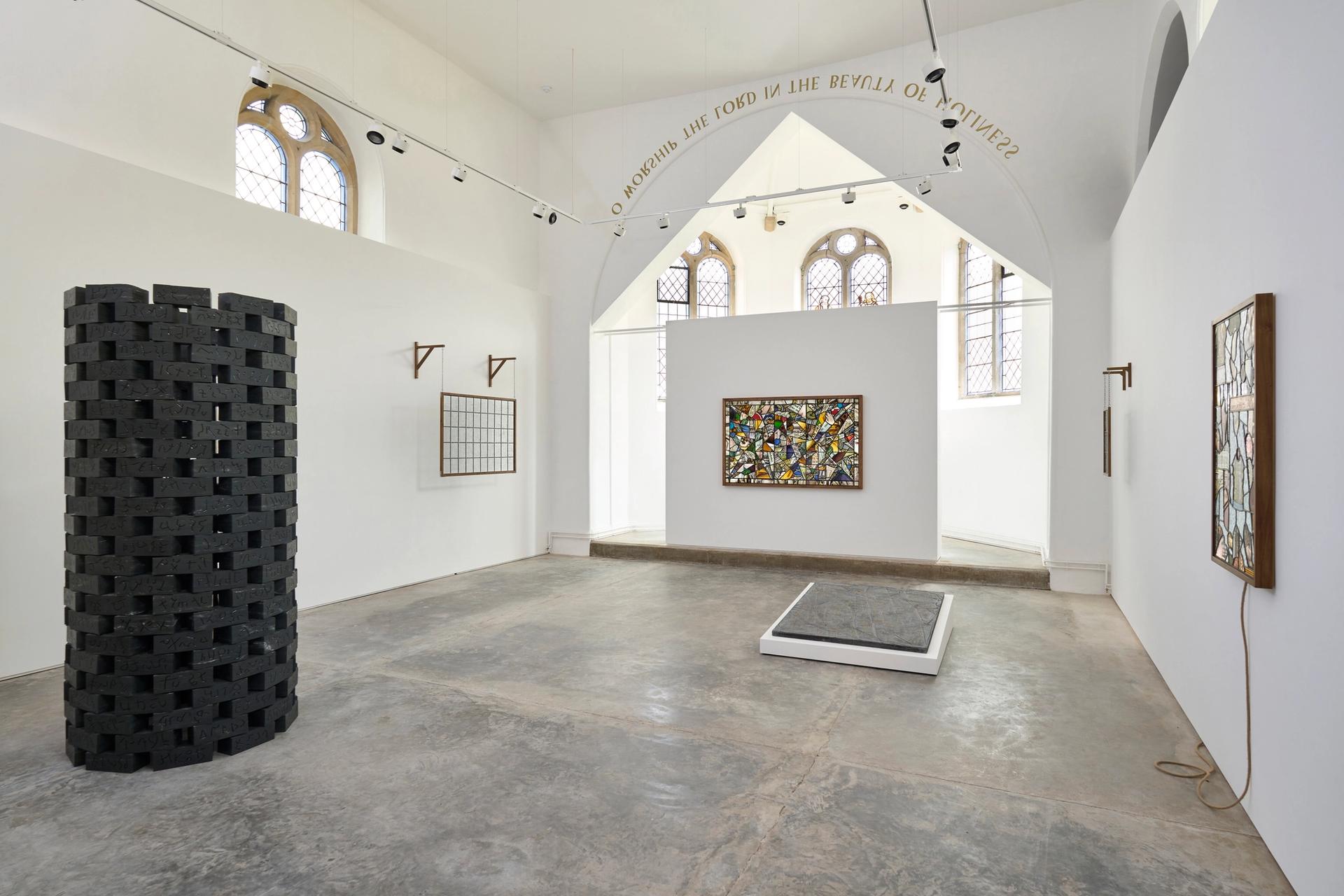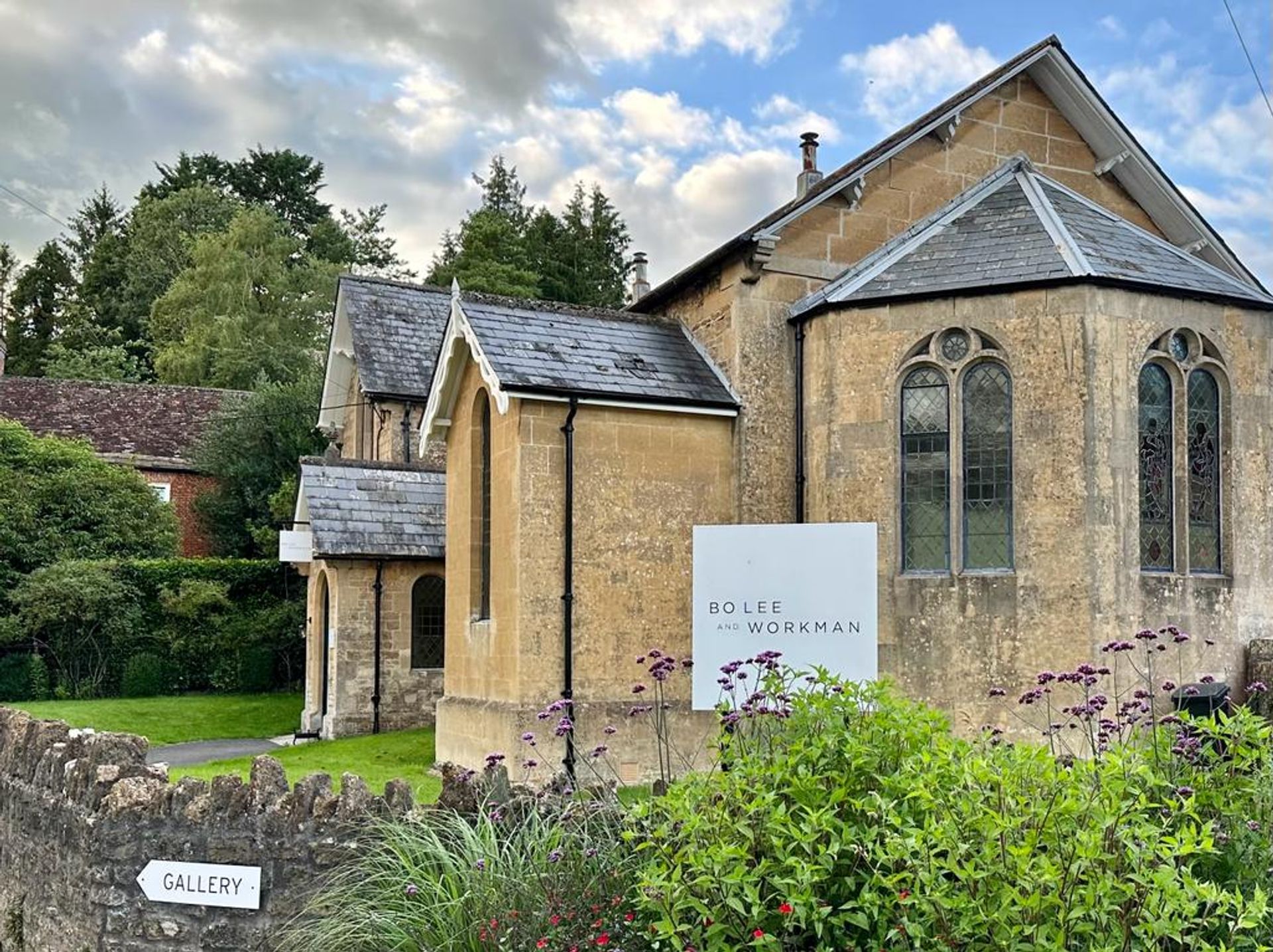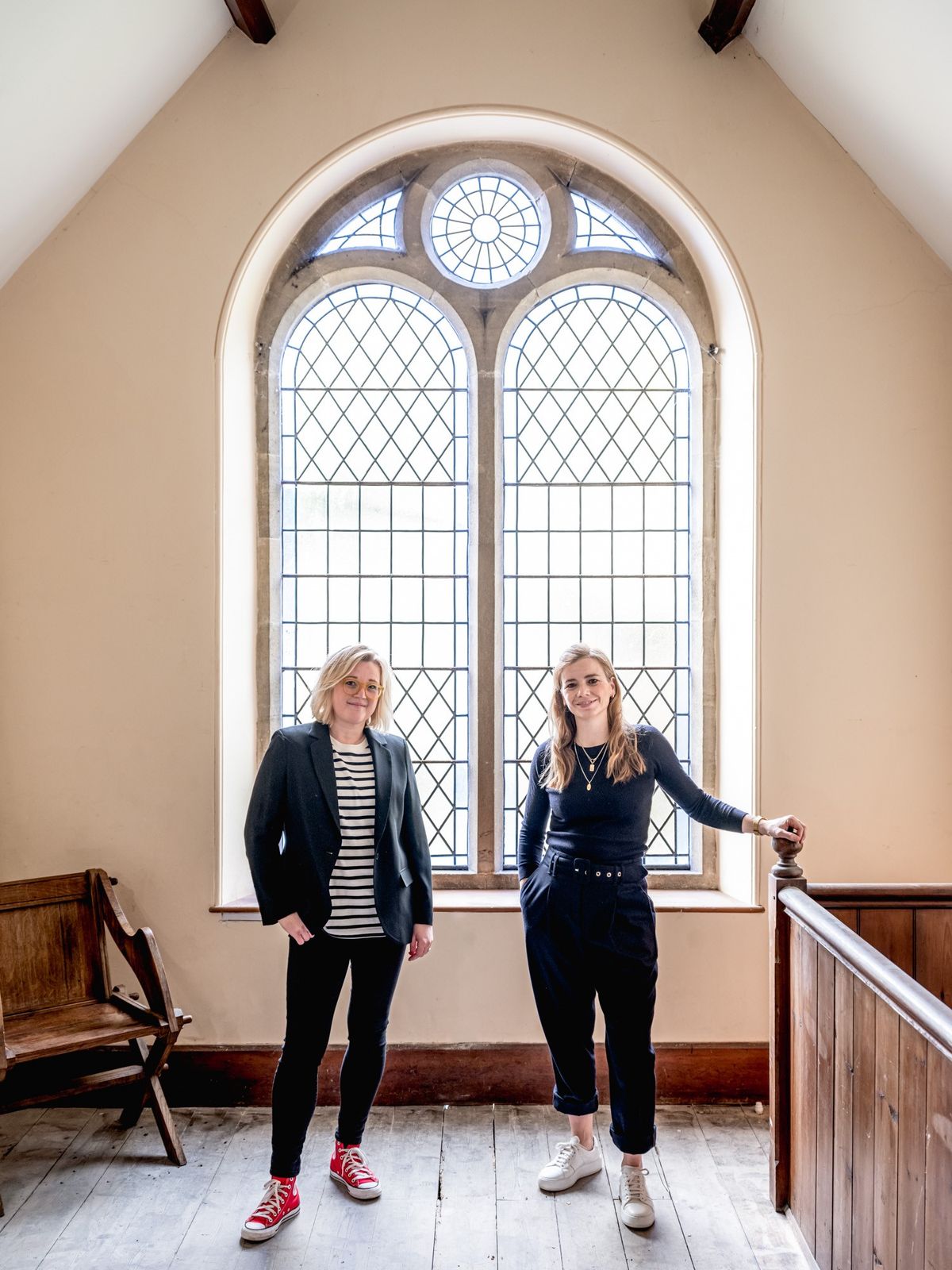Bruton’s rise is a strange phenomenon. Fifteen years ago this small Somerset town was a rural backwater, a pretty but fairly nondescript town known primarily for its private schools.
Not now. No, now it’s where arty Londoners can escape the city and still feel “seen”—milk alternatives abound, Hauser & Wirth’s manicured farm shop sells such essentials as wagyu burgers and kombucha, and you’re as likely to see a Jenny Holzer as a Holstein cow.
Of course, the unexpected opening of Hauser & Wirth’s gallery complex on the town’s outskirts in 2014 has contributed hugely to Bruton’s boom, as did the arrival of nearby luxury hotel The Newt in 2019 and before that At The Chapel in 2008, bringing sourdough pizza to the south west.
Now the town has another gallery—Bo Lee and Workman, first launched last year by Jemma Hickman, who opened her bo.lee gallery in Bath in 2009, aged just 25, before moving it to Peckham in 2013, and Alice Workman, who was previously senior director of cultural centres Europe at Hauser & Wirth until 2021 (initially joining to launch the Somerset gallery) and has lived in Bruton for over a decade.
Although the pair started the business in 2022, its permanent physical manifestation only opened in May this year, in a former Methodist chapel, sensitively remodelled by Bruton-based Bindloss Dawes architects, at one end of the high street.

Installation view of Jonathan Michael Ray: The Voice in the Shadows, which was the opening show at Bo Lee and Workman
Photo: Jesse Wild
Hickman closed her Peckham gallery during the pandemic: “I was about to have my second baby, and my husband has type 1 diabetes so neither of us could leave the house. I had this big gallery and three staff, so I needed to do something about it.” They decided to move to Bruton, viewing their now home “in the snow in the middle of lockdown.”
Hickman met Workman at a children’s playdate. “We started hanging out a bit and I was saying I wanted to relaunch the business,” Hickman says. “Alice had left Hauser already and I asked if she wanted to do some consultancy work. When I said these are the things I think the business is missing, a light went off and she said: 'I think these are all the things I could give.' So, we decided to go in together as a partnership and relaunch the business as a new gallery.”
At first, the plan was not to have a permanent space—the duo held some pop-up events in the area in 2022. But if they did take on a permanent space, Hickman says, it “needed to be a destination gallery, something special, in order to draw people—we didn’t want a high street gallery”. So, when the Methodist chapel came on the market last year, they could not resist drawing up a proposal and putting in an offer. It was, Hickman says, “like buying a house when you’ve just met someone. But for both of us it felt like the right thing to do.” Hickman has, she says, “always been obsessed by religious buildings—the last show I did in Bath was in Bath Abbey.”
The renovation started in February and finished in May, in time for the opening show of works by the Cornwall-based artist Jonathan Michael Ray. This was followed by an exhibition of paintings by Kim Booker, an artist based in Tracey Emin’s TKE Studios in Margate, last month and now a group exhibition titled Ways of Seeing (until 23 September), inspired by John Berger’s famous book and featuring works by Polly Morgan and Sam Bakewell, Adeline de Monseignat, Des Hughes and John Wood & Paul Harrison.
As for the artists the gallery represents, several have also moved to the West Country from London over the past five years, such as Amy Stephens, who now lives in Bath, Will Cruickshank who is in Devon, and Ray in Cornwall. Rather than plucking artists straight out of degree shows, Bo Lee and Workman like working with those “who have a bit of history, perhaps have reached a moment in their career when they need a bit of an extra boost”, Hickman says. More artist representations are set to be announced later this year.
But can you really sell progressive contemporary art, works that aren’t slightly-abstract-sea-or-landscapes, for five-figure sums in a rural location such as this? Absolutely, Hickman says: “Business-wise, it’s the best it’s ever been. For me personally, Bruton has been better for business than London ever was.” She puts this down to the “very transient and competitive” environment of the capital: “There are so many galleries. Trying to get people to come to shows was much more difficult. Whereas with Peckham people would whizz in and out of the gallery, here they have a conversation and take their time—our openings are also packed.” The gallery predominantly shows works priced from just under £1,000 to just under £100,000, selling to a mix of local and international buyers—Booker’s works, priced from £950 to £28,000, sold to collectors in Dubai, Hong Kong and New York as well as those from just down the road.

Bo Lee and Workman is housed in a former Methodist chapel
Photo: Jesse Wild
“Having had the gallery in Bath, I knew clients in the area, and Alice had been here for 10 years so had a very established network and amazing knowledge of quite a different end of the art market from me,” Hickman says.
Workman later says over email: “When Jemma and I met and talked about her gallery, it quickly became apparent that we could combine our ambitions to create something new and authentic in Bruton. Our principles for working with artists and our community-focused ethos aligned, but it was also clear what strengths as individuals we could bring to the partnership.” Whereas Hickman had run her own business for nearly 15 years, Workman had the experience of working for a mega-gallery such as Hauser & Wirth through a period of rapid expansion: “Working for Hauser & Wirth in Somerset and Spain taught me the importance of a holistic approach to building a community around the gallery. On a much smaller scale, Jemma and I are doing something similar in Bruton, bringing together a community of artists, collectors and locals.”
While the gallery is not yet doing fairs—“We want to do them, but the right ones,” Hickman says—it will participate in Frieze Sculpture in Regent’s Park, London, this autumn (20 September-29 October) with a piece by Amy Stephens. The gallery will also hold a show of the sculptor’s work in Bruton from 29 September to 4 November.
Our remote, digital existences during the pandemic supposedly threatened the future of the physical gallery space and all its associated costs. But quite the opposite seems true—the desire for bricks and mortar and the communal experience of a gallery seems stronger than ever. “I really missed it,” Hickman says. “The interaction, the ability to make a space your own and provide a secure platform for your artists.” But does she miss London? “No, not at all!”


